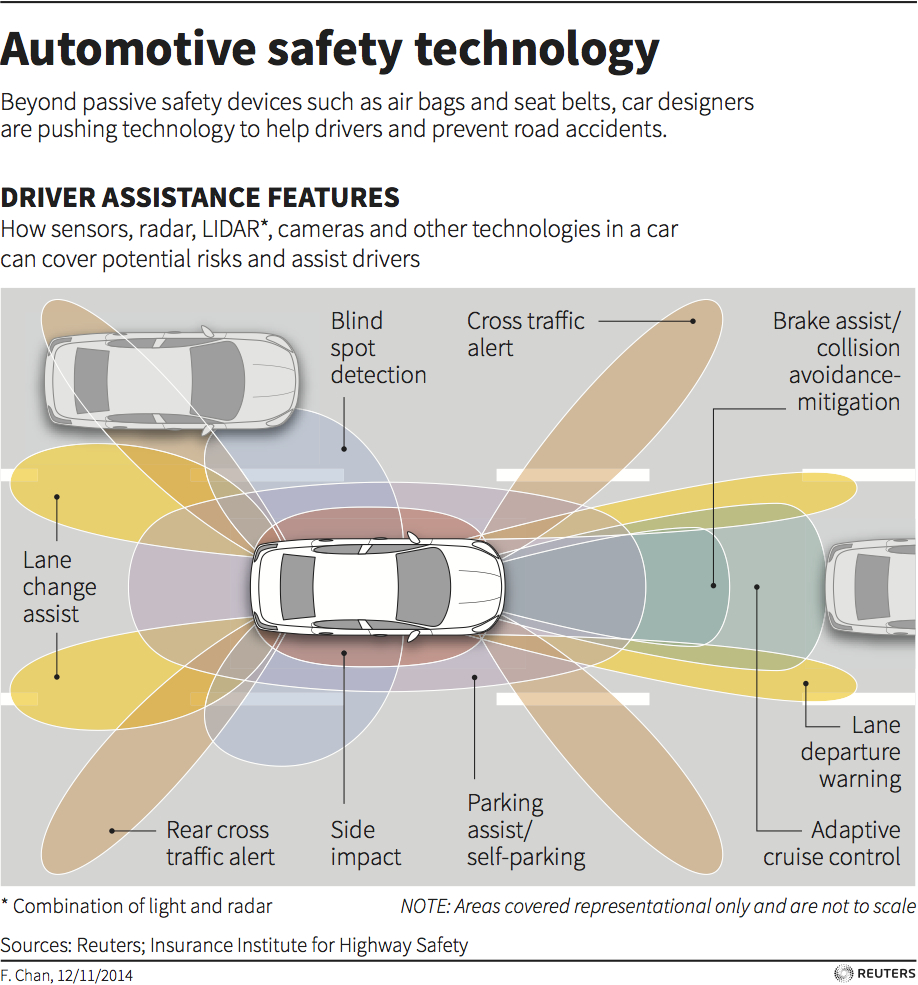Reports on crashes and collisions are coming from every corner of the country as I am writing. A devastating accident between a tow truck and a Honda Civic took place in Middleborough on the morning of 9th August.
New York Times reported a dump truck hitting an overpass on the morning of August 4. The accident took place on the New Jersey Turnpike and left the driver dead. These incidents are unfortunate, but what I find even more unfortunate is the lack of awareness that's needed to prevent truck accidents from taking place.
It's true that we can make the highways safer by following expert tips. But that's not enough, we also need cutting edge technologies to rule out, at least reduce the number of truck accidents to the bare minimum.

Passenger vehicles
What you probably don't know is passenger vehicle drivers are more responsible for highway collisions than truck drivers. We blame the truck driver whenever we heard of a truck accident without even enquiring what really happened.
But the fact-sheet shows a completely different picture. It shows passenger vehicle drivers are more responsible for an accident than a truck driver. Hence, there's hardly any point in playing the blame game. Instead, the car owners need to install the following technologies in their vehicles:
- Warning for forward collision
- Warning for lane departure
- Detection of blind spot
- Autobrake
- Adaptive headlights
- Prevention of lane departure
In case a passenger car doesn't already have them embedded, the owner should install them as soon as he could or sell out his existing car and buy a new one that comes with these technologies.
Semi-truck accident prevention
The technologies mentioned above suit passenger vehicles more than trailer trucks or big rigs. A semi-truck can cause serious accidents, and that's why it requires technologies that are more robust. Such technologies can make a truck less prone to accidents on the highways.
Here're some of the technologies that a semi-truck requires:
- Fatigue monitoring gear: Some trucking companies are developing this gear while some have already developed it. Since a large trailer-truck or a heavy-duty truck costs more than $100000, the extra costs for installing a fatigue monitoring gear won't make much of a difference.
- Electronic stability control: Large cargo trucks carry huge loads. On the highways, when they change lanes or increase speed, loads often move making the bulk of the weight skewed to a particular corner. This can lead to a serious accident. The electronic stability control (ESC) technology makes use of computer-monitored steering and braking to keep the odds of rollovers at bay.
- Remote data sensing: Present day technologies are heavily dependent on sensors. Installing remote data sensing tools allow trucking companies to watch in real-time how a truck is being driven. They can warn the drivers about behaviors, which might result in an accident. They can also keep the feeds for being used later.
- Eyelid monitoring: The technology comes with a camera that collects feeds and then analyzes them. Whenever the driver's eyelids become droopy, it warns him by making a sound or in some other ways. The approximate cost of installing this technology is between $500 and $2500, which means a trucking company won't find it a financial burden.
- Forward collision warning: Passenger cars sometimes hit preceding trailer-trucks. Besides, when a truck accident owes to the driver's negligence, the front end of the truck gets damaged. The forward collision warning (FCW) technology alerts the driver when the closing rate between his car and a preceding car is less than the optimal rate. The algorithms behind this technology are quite advanced and can understand traffic situations.
The technologies discussed above reduce the likelihood of truck accidents and make the highways safer.
Cost-efficiency
Some of these technologies are expensive. But trucking companies have to put up with that because the high cost at the initial stage minimizes the chances of accidents, which rules out the possibility of investing in the truck later.



![Top CEOs under 30-The Young Guns Of Technology [Infographic]](https://lerablog.org/wp-content/plugins/wp-thumbie/timthumb.php?src=http://lerablog.org/wp-content/uploads/2015/03/the-young-guns-of-technology.jpg&w=300&h=140&zc=1)



